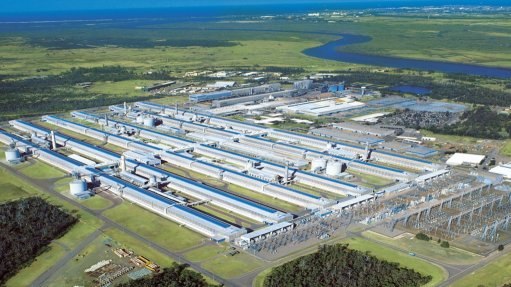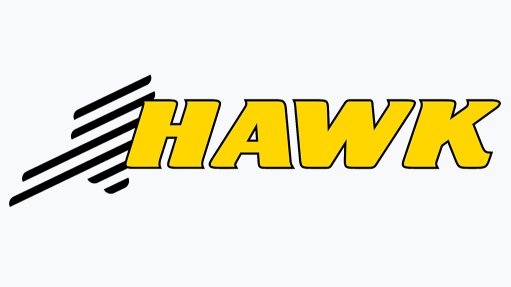Miner reports gold intercepts at flagship deposit


STRIKING GOLD The gold mineralisation at Adumbi is associated with up to 130 m of interbedded banded ironstone, quartz carbonate and chlorite schist
Photo by Shuttershock
Gold miner Loncor Resources last December announced that the second core hole of a 7000 m drilling programme at its Adumbi deposit had intersected gold at its 84.6%-owned Imbo Project, in the eastern part of the Ngayu greenstone belt, in the Democratic Republic of Congo (DRC).
The second core hole has significant gold intersections of 33.30 m grading 3.25 g/t gold (including 5.7 m grading 7.00 g/t gold and 9.07 m grading 5.11 g/t gold) and 10.45 m grading 3.88 g/t.
Borehole LADD003 had an inclination of –57º and azimuth of 220º at the start of the hole and regular measurements of inclination and azimuth were taken at 30 m intervals.
All core was orientated, and it is estimated that the true widths of the mineralised sections are 80% of the intersected width. All intercepted grades are uncut. Borehole LADD003 was drilled in place of LADD002, which was stopped after deviating from its intended target depth.
At the time of the announcement, Loncor president Peter Cowley commented: “We are very encouraged by the results of the first two core holes of our 7 000 m drilling programme at Adumbi, where we are targeting a significant increase of resources, both within and below the openpit shell.”
“These two infill holes were drilled within the openpit shell where there is already an inferred resource of 2.19-million ounces (28.97-million tonnes grading 2.35 g/t gold). These results will further increase the inferred resource. Deeper drilling is now focused on the downdip mineralisation below the pit shell.”
In addition to core holes LADD001 and LADD003, the deeper hole LADD004, which was targeting mineralisation 140 m below previous borehole SDD53 (which intersected 23.5 m grading 6.08 g/t gold and was drilled in 2017), was completed and cores have been submitted for assay.
LADD007 and LADD006 are currently being drilled to intercept the downdip mineralised zone below the openpit shell, and at shallower depth towards the north-west base of the pit shell respectively.
The gold mineralisation at Adumbi i s associated with up to 130 m of interbedded banded ironstone, quartz carbonate and chlorite schist, with higher grade sections being found in a strongly altered siliceous unit termed ‘Replaced Rock’, where structural deformation and alteration has completely destroyed the primary host lithological fabric.
Disseminated sulphide assemblages include pyrite, pyrrhotite and arsenopyrite, which can attain up to 20% of the total rock in places.
The objective of the current drilling programme is to outline additional mineral resources to the current inferred mineral resource of 2.5-million ounces of gold on Loncor’s Imbo project, which contains the Adumbi, Kitenge and Manzako deposits (inferred mineral resource of 30.65-million tonnes grading 2.54 g/t gold).
Quality Control and Quality Assurance
Drill cores for assaying were taken at a maximum of one metre intervals and were cut with a diamond saw, with one-half of the core placed in sealed bags by company geologists and sent to the company’s on-site sample preparation facility.
The core samples were then crushed down to 80% passing –2 mm, with half of the sample (up to 1.5 kg) pulverised down to 90% passing 76 μm.
About 150 g of the pulverised sample was then sent out to global verification and testing company SGS’s laboratory in Mwanza, Tanzania. Gold analyses were carried out on 50 g aliquots by fire assay.
In addition, check assays were also carried out by the screen fire assay method to verify high-grade sample assays obtained, initially, by fire assay.
As part of Loncor’s quality assurance and quality control procedures, internationally recognised standards, blanks and duplicates were inserted into the sample batches prior to submitting material to the SGS laboratory.
Article Enquiry
Email Article
Save Article
Feedback
To advertise email advertising@creamermedia.co.za or click here
Press Office
Announcements
What's On
Subscribe to improve your user experience...
Option 1 (equivalent of R125 a month):
Receive a weekly copy of Creamer Media's Engineering News & Mining Weekly magazine
(print copy for those in South Africa and e-magazine for those outside of South Africa)
Receive daily email newsletters
Access to full search results
Access archive of magazine back copies
Access to Projects in Progress
Access to ONE Research Report of your choice in PDF format
Option 2 (equivalent of R375 a month):
All benefits from Option 1
PLUS
Access to Creamer Media's Research Channel Africa for ALL Research Reports, in PDF format, on various industrial and mining sectors
including Electricity; Water; Energy Transition; Hydrogen; Roads, Rail and Ports; Coal; Gold; Platinum; Battery Metals; etc.
Already a subscriber?
Forgotten your password?
Receive weekly copy of Creamer Media's Engineering News & Mining Weekly magazine (print copy for those in South Africa and e-magazine for those outside of South Africa)
➕
Recieve daily email newsletters
➕
Access to full search results
➕
Access archive of magazine back copies
➕
Access to Projects in Progress
➕
Access to ONE Research Report of your choice in PDF format
RESEARCH CHANNEL AFRICA
R4500 (equivalent of R375 a month)
SUBSCRIBEAll benefits from Option 1
➕
Access to Creamer Media's Research Channel Africa for ALL Research Reports on various industrial and mining sectors, in PDF format, including on:
Electricity
➕
Water
➕
Energy Transition
➕
Hydrogen
➕
Roads, Rail and Ports
➕
Coal
➕
Gold
➕
Platinum
➕
Battery Metals
➕
etc.
Receive all benefits from Option 1 or Option 2 delivered to numerous people at your company
➕
Multiple User names and Passwords for simultaneous log-ins
➕
Intranet integration access to all in your organisation



















